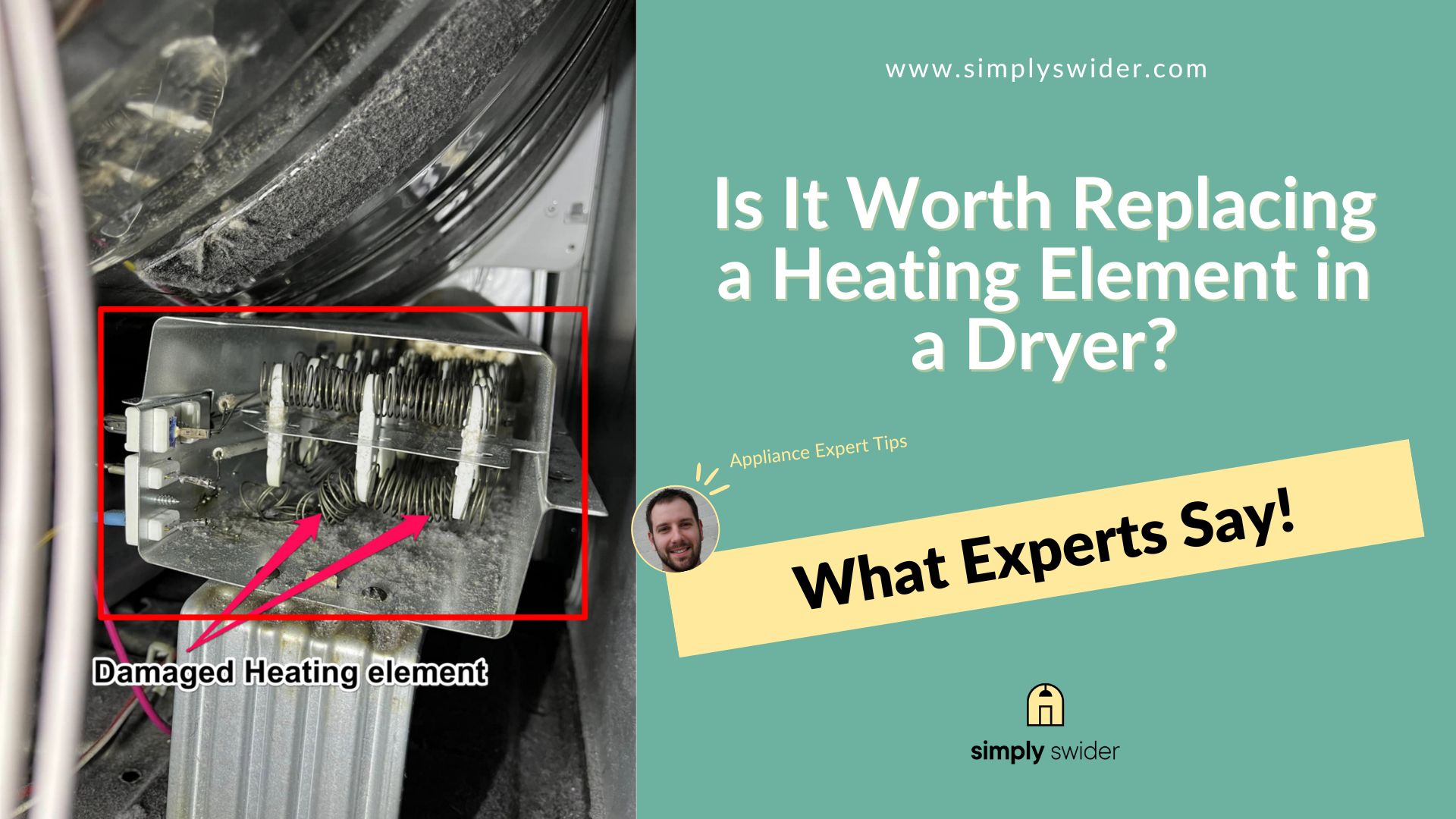We’ve all been there:
Dryer parts wear out. But at what point is it better toscrap the whole dryer and get a brand-new one?
Well:
That’s what I will help you figure out with your dryer’s faulty heating element.
I’ve also solicited expert input from Brandon McPaul, an experienced appliance technician from Detroit, Michigan.
Together:
We will outline the factors you must consider before replacing your damaged heating element.
Let’s begin.
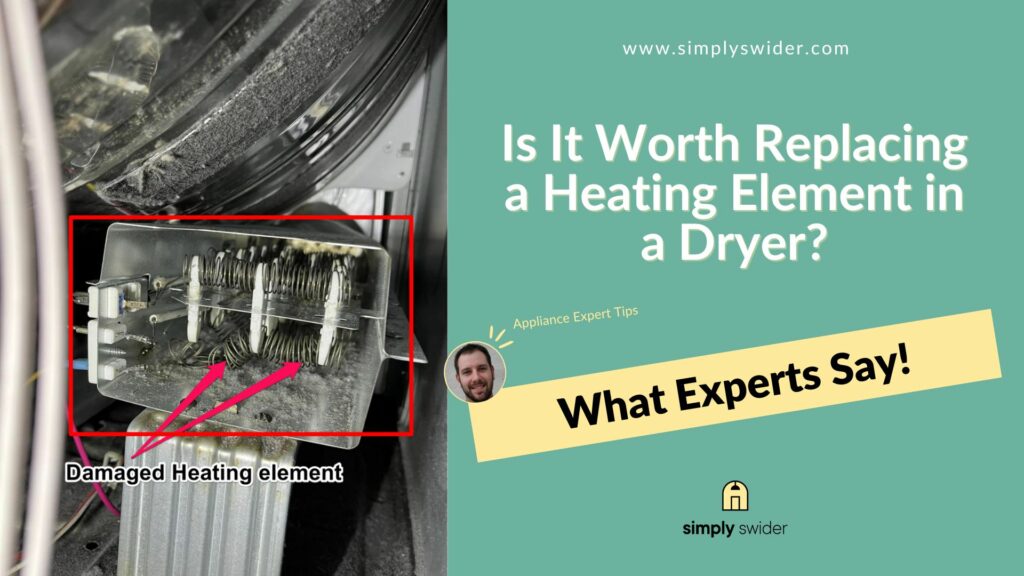
Table of Contents
Is It Worth Replacing a Heating Element in a Dryer?
To determine whether replacing your dryer’s heating element is economically sensible, you must make a few critical considerations. These involve comparing the repair cost to the price of a new dryer and assessing your dryer’s value, life expectancy, and warranty status. It is also important to be certain that the heating element is faulty.
Moving forward:
I will highlight and explain these vital factors in more detail. Then, you can weigh your options and make your decision.
Factors to Consider When Replacing a Damaged Heating Element
| Part | Heating Element |
| Location | It is situated within the dryer’s heater housing at the back of the front or rear panel. |
| Ease of troubleshooting | Moderate |
| Cost | $30 – $100 |
| Repairable | No |
1. Cost of Replacing the Bad Heating Element Compared to the Price of a New Dryer
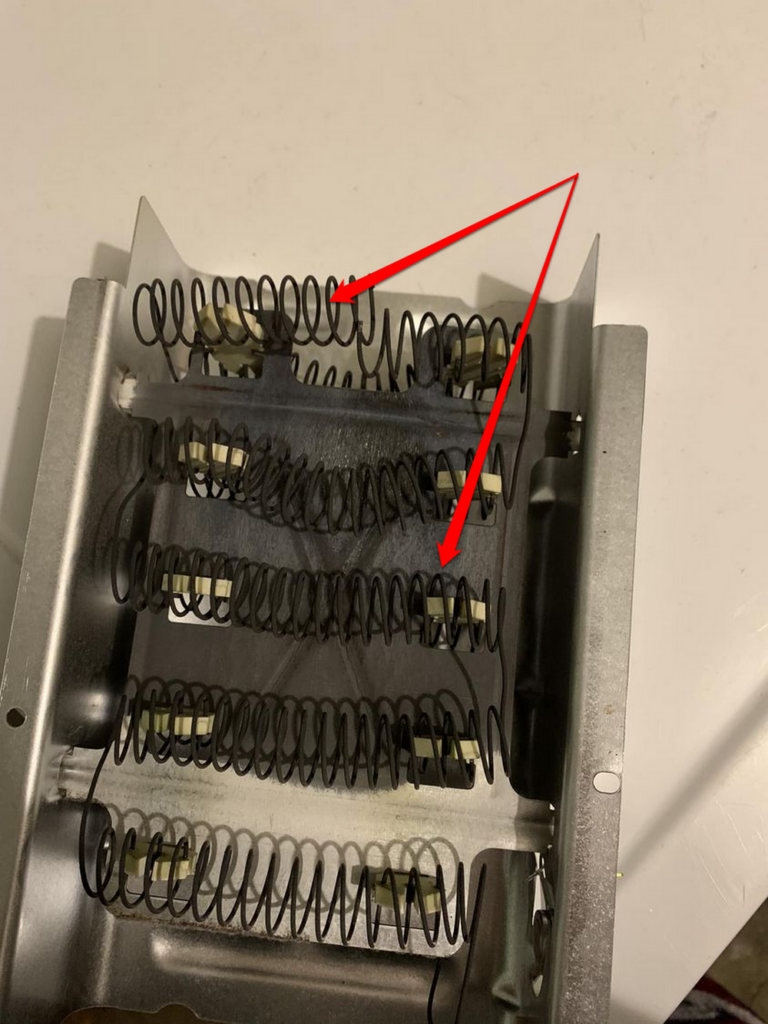
Ask yourself this:
Is it cheaper to replace the faulty heating element than it is to purchase a new electric dryer?
Then, weigh the cost of repair against the price of a new dryer. What did you find out?
As a rule of thumb:
Brandon asserts that replacing the dryer could be a better choice if the repair cost is above 50% of the cost of a new dryer.
You see:
A dryer heating element across brands averagely costs between $30 – $100.
If, unlike this Reddit user, you decide not to do the repair yourself, you must factor in the $50 – $100 service fee that a professional would charge.
On the other hand:
A new dryer is typically priced between $400 – $750. As such, it is obvious that replacing your heating element costs significantly less than buying a new dryer.
In line with this:
If your decision is cost-sensitive, then it is clear that replacing the heating element makes more economic sense.
2. Dryer’s Overall Value and Life Expectancy
Get this:
Assessing your dryer’s overall value and life expectancy is crucial to your decision-making process when dealing with a faulty heating element.
To this end, you must evaluate your dryer’s age and physical condition to get a clearer idea of the economically wise choice.
If the dryer is over a decade old, you should consider replacing it instead of the heating element. And I agree with this opinion.
The thing is:
Old dryers have their fair share of components that have worn with time. As such, replacing the dryer would generally be a better resolution in the long run.
Furthermore:
A heating element that develops faults more than usual, coupled with other malfunctioning parts, diminishes the value of the dryer.
That’s why Brandon advised this Reddit user, whose 10-year-old Samsung DV42H5000EW/A3 dryer’s heating element failed consecutively, to purchase a new unit.
In his opinion:
“Rather than accumulate replacement fees on a dryer in poor condition, it is better to get a fresh start.”
“However, if the dryer is relatively new and in good condition, replacing the heating element will be less of a financial burden. Plus, it extends the dryer’s lifespan.”
3. Dryer’s Warranty Status
Get this:
Most appliance companies provide a warranty with coverage typically ranging from a year to ten years.
The idea is that:
In the event of a technical difficulty, such as a faulty heating element, the company covers the cost of repairs and replacements.
What’s more:
They could also send you a brand-new unit for FREE, if necessary.
Did somebody say free?
Yes:
If your dryer smells like burning and you discover a damaged heating element is the culprit, immediately check your dryer’s warranty status.
You’d typically find it in the literature sheets that come with your dryer after purchase.
You see:
Jack, a Simply Swider reader, reached out concerning his issues with his Whirlpool Cabrio dryer’s heating element.
He claimed that he had barely used the dryer for about three months when the heating element became faulty.
So:
I reminded him of the Whirlpool warranty that covers repair costs and replacement parts for up to a year from purchase.
Other dryers have similar warranties, so be sure to confirm the specific warranty attached to your model.
In Brandon’s words:
“If the warranty covers your dryer, you have zero financial responsibilities. Whether your dryer brand replaces the heating element or the entire dryer is inconsequential. It is a win-win situation.”
However:
You must seek the most cost-effective option and get a replacement heating element if the warranty does not cover your dryer,
4. Electrical Continuity in the Heating Element
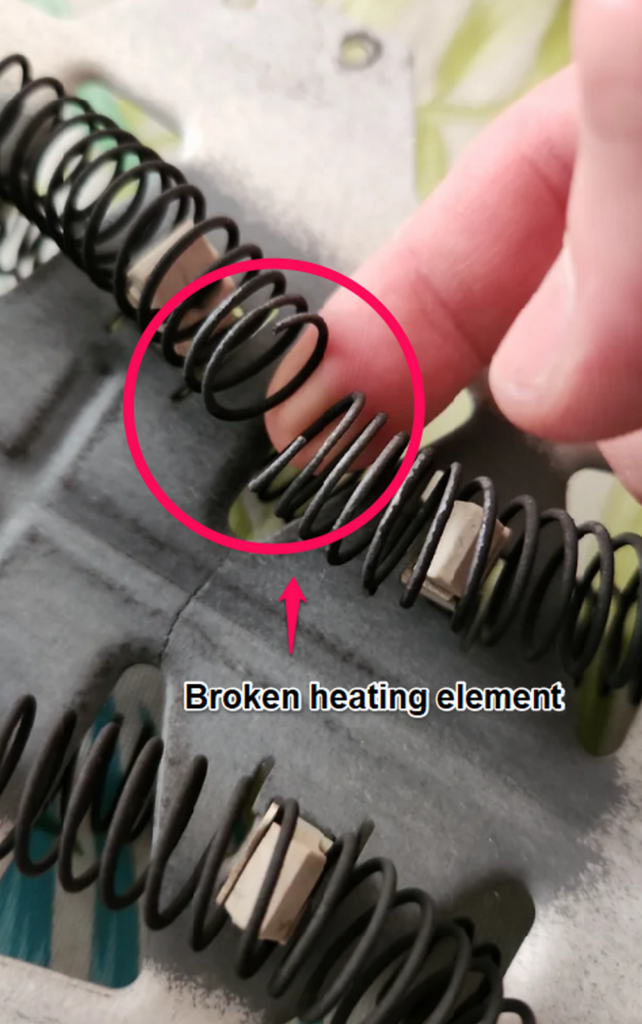
Ultimately:
You do not want to waste money replacing a heating element that still works. So, you must confirm that your dryer’s heating element is indeed faulty.
How?
If your dryer overheats or doesn’t heat, that is an indication that the heating element is bad.
Inspecting the heating element for visible signs of damage is another way to confirm its defect.
However:
The most accurate way to confirm that your heating element is bad is by testing it with a multimeter.
Now:
When tackling his GE electric dryer that wasn’t heating, a member of our Facebook community shared his experience with the group.
He lamented that, unfortunately, he had replaced his heating element when the problem was the thermal fuse.
To this end:
Brandon emphasizes the importance of testing your heating element for electrical continuity to be certain it is defective.
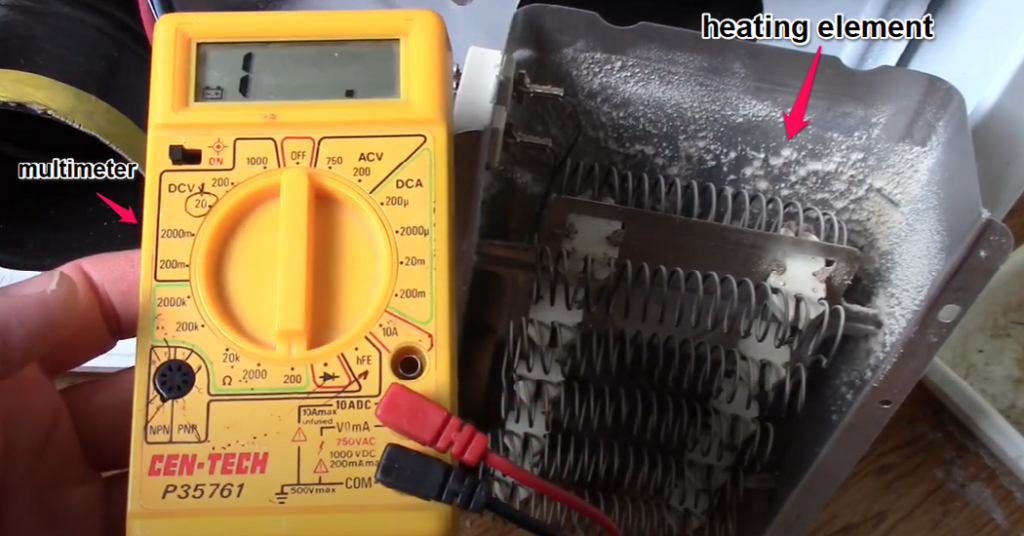
Here’s how to go about it:
Unplug the dryer, remove the access panels, detach the heating element from the dryer, and disconnect the wiring. Then, examine the element for physical damage, such as a broken coil.
Finally:
If there are no signs of damage, test the element for continuity with a multimeter. If it lacks electrical continuity, replace it.
Conclusion
To wrap up:
It is important for you to know when to cut your losses with your dryer if your heating element gets bad.
That is why I have outlined and expanded on certain key elements to contemplate before deciding.
These include:
- Cost of replacing the bad heating element compared to the price of a new dryer.
- Dryer’s overall value and life expectancy.
- Dryer’s warranty status.
- Electrical continuity in the heating element.
Brandon adds,
“If your dryer’s heating element persistently develops issues that may cause it to keep shutting off, it would be best to adhere to preventive measures.”
“Cleaning out the lint trap and vents regularly, as well as adopting other healthy maintenance practices, will help to prevent faults in the heating element.”
Also:
If you decide to replace your heating element, you can use our “Ask the Expert“ feature for bespoke troubleshooting guidance.
Remember to let me know how it goes in the comment section below.
Frequently Asked Questions
When your dryer’s heating element gets bad, it means it has lost electrical continuity. As a result, most heating elements cannot be repaired but can be replaced.
Replacing a heating element is not as difficult as you might think; it requires moderate effort. The difficulty mostly lies in the reinstallation process, as wiring can be tricky.
If your dryer is properly maintained and serviced, the heating element should last over 15 years.

